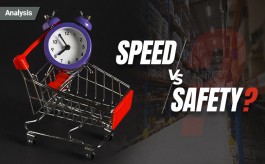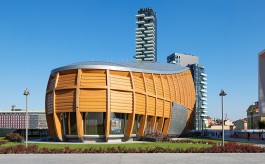Will these 4 do’s define the new retail playbook?
By N Jayalakshmi | July 17, 2023
Disruptions are the order of the day and most businesses today are alive to these dynamic disruptions and to the need to question the status quo. But what does it mean for the Indian retail ecosystem? Is there a need for a new check-list of do’s?
A new Mckinsey report called, ‘Retail Reset': A new playbook for retail leaders’ points to the need for retailers to take a re-look at long held strategies. It attributes the need to the way major stakeholders in the ecosystem have changed: consumers, suppliers, investors, employees. The report accordingly suggests some leads for retailers to address all of these stakeholder groups and keep them happy for faster business growth. So can this be applied to Indian retail as well? Well yes, in a sense. After all, there have been enough disruptions in the Indian market that call for a major rejig of established strategies. But then the Indian retailers’ challenges are somewhat unique, given the complexity and uniqueness of the Indian market and the whole ecosystem itself. So any list of do’s will have to have to take these unique dynamics into account.

Based on industry research reports and based on the common challenges voiced by Indian retailers in some of the conversations with Retail4Growth.com, here’s a suggested list of do’s. Would these take into account the new retail normal, bridge gaps in the market and enable new opportunities for retail service and solution providers? Well, that’s a question for the industry to mull over. Meanwhile here’s a look at these four do’s.
1. Location Intel is key
Retailers across categories are on an offline expansion spree today and the pivot of their expansion drive is location intel. But do all of them have access to business enabling location intel? Not necessarily. The approach to mapping markets and arriving at the right choice of location for a new store may vary from brand to brand. But one thing is clear: Finding the right location that matches the needs of a retail brand is a common challenge. Perhaps a system or partner who can chart out a continuous process of mapping markets and identifying right location is a need of the hour?
2. A store space is a social one, and so are the skills
There is growing evidence to suggest that the offline and online retail channels can happily co-exist, but perhaps each with very distinct purpose and functioning. Every retail brand today knows that their customer doesn’t need a brick-and-mortar space to buy their product. E-commerce has very clearly shown that. And yet everyone of these retail brands is seeking to get closer to the customer in a space that enables tactile and social experiences. Indeed this is one of the reasons store experience is the make or break factor in raising a brand’s customer loyalty quotient. Quite obviously, transaction is just one of the many interactions between a consumer and a brand in offline store space. And this means a socially conducive space with the right interpersonal factor.
But one of the most common grouses voiced by retailers today is the difficulty of finding skilled store staff who can smoothly navigate the social space with their customers - conversations that strike the right chord, enable purchase decisions and in the process enhance brand value and perception.
This is especially so for specialised luxury/premium retail brands that target a niche target customer base. They often find it challenging to find store personnel equipped with the right social/communication skills to interact with their customers. This points to a serious need for retail staff training that addresses specific needs of various retail brand categories.
3. Tech integration is about tech thinking
The best examples of technology integration in retail often come from retailers who don’t look at it as an isolated function but as a pervasive factor that cuts across all functionalities. They embed technology into their organisation’s culture and core. It is a way of thinking for employees across departments and functions- whether HR and supply chain or VM and store planning. This facilitates a seamless adoption of technology both at the experiential front and the operational back end - from QR code embedded store windows and smart mirrors to robust supply chain and inventory management. And this is perhaps a smart way of making those technology investments really count. No wonder CTOs are among the most wanted lot in the retail business today.
4. Building a community of partners
If end customers are the most important stakeholders in the retail ecosystem, then retail suppliers and service providers are the ones who can enable happy customers. After all, a successful store is one that delivers a happy experience with all the right elements in place - store design and everything that goes with it including right lighting, furniture, signage and branding, visual merchandising, in-store communications and other elements. The industry that supplies these is driven by dynamic market changes and evolving retail needs. And for it to deliver results that matter would mean working as partners with retailers and brands, as part of a close knit community with a collective common goal - elevating the in-store experience and catering to the new-age customer. This would mean collaboration for innovation, research & development and setting quality standards.
So, any thoughts?






_140_270.png)


Comments